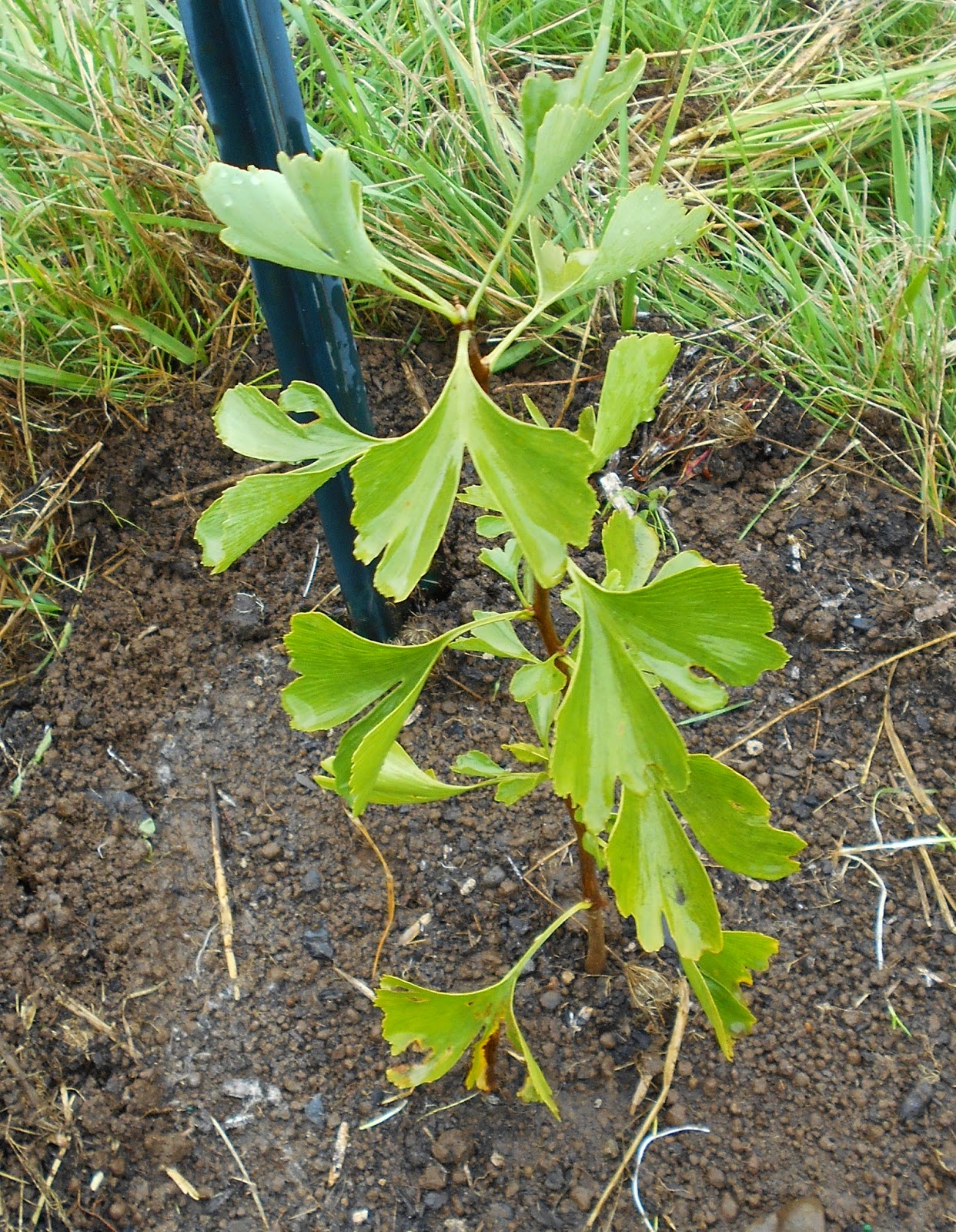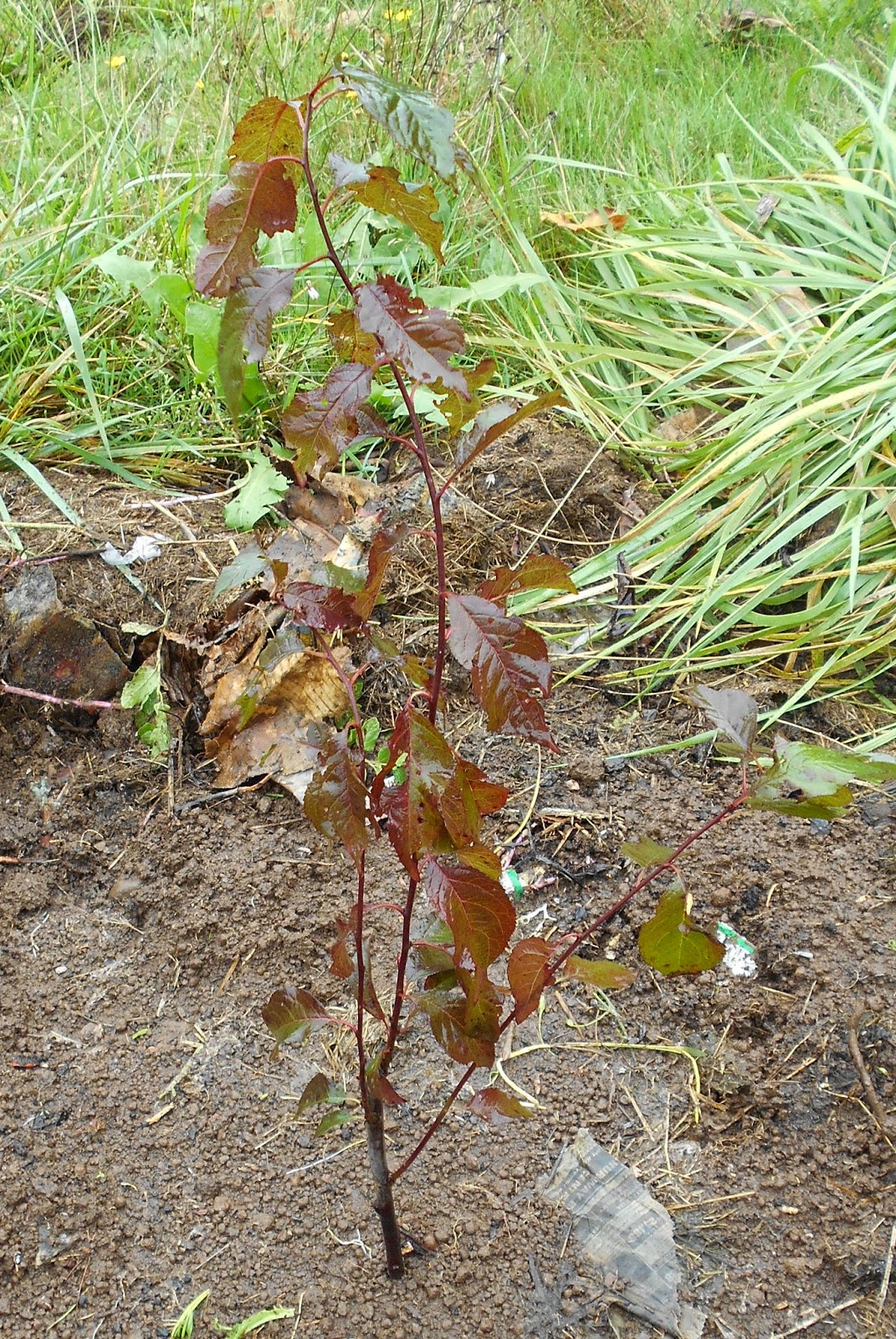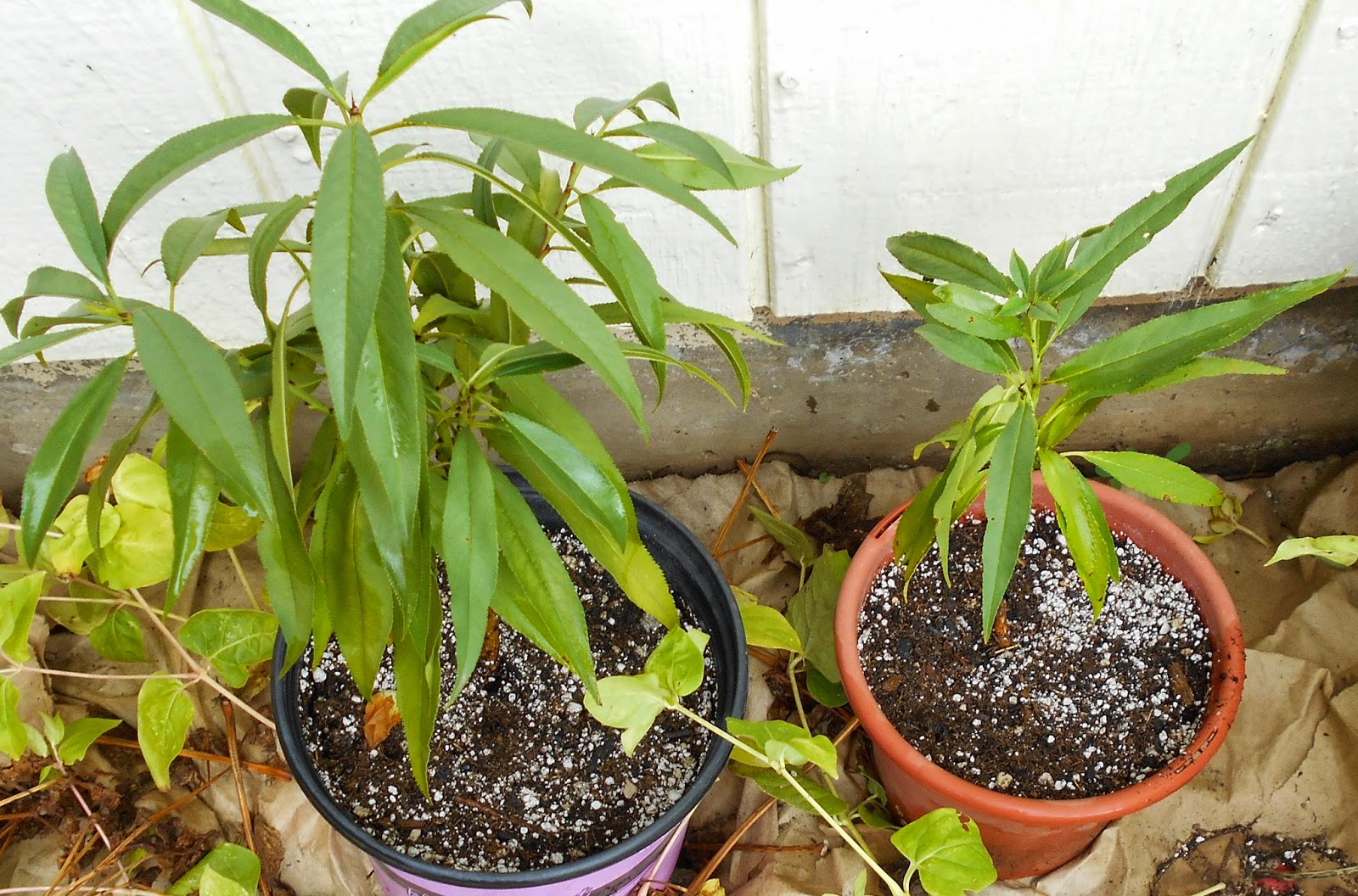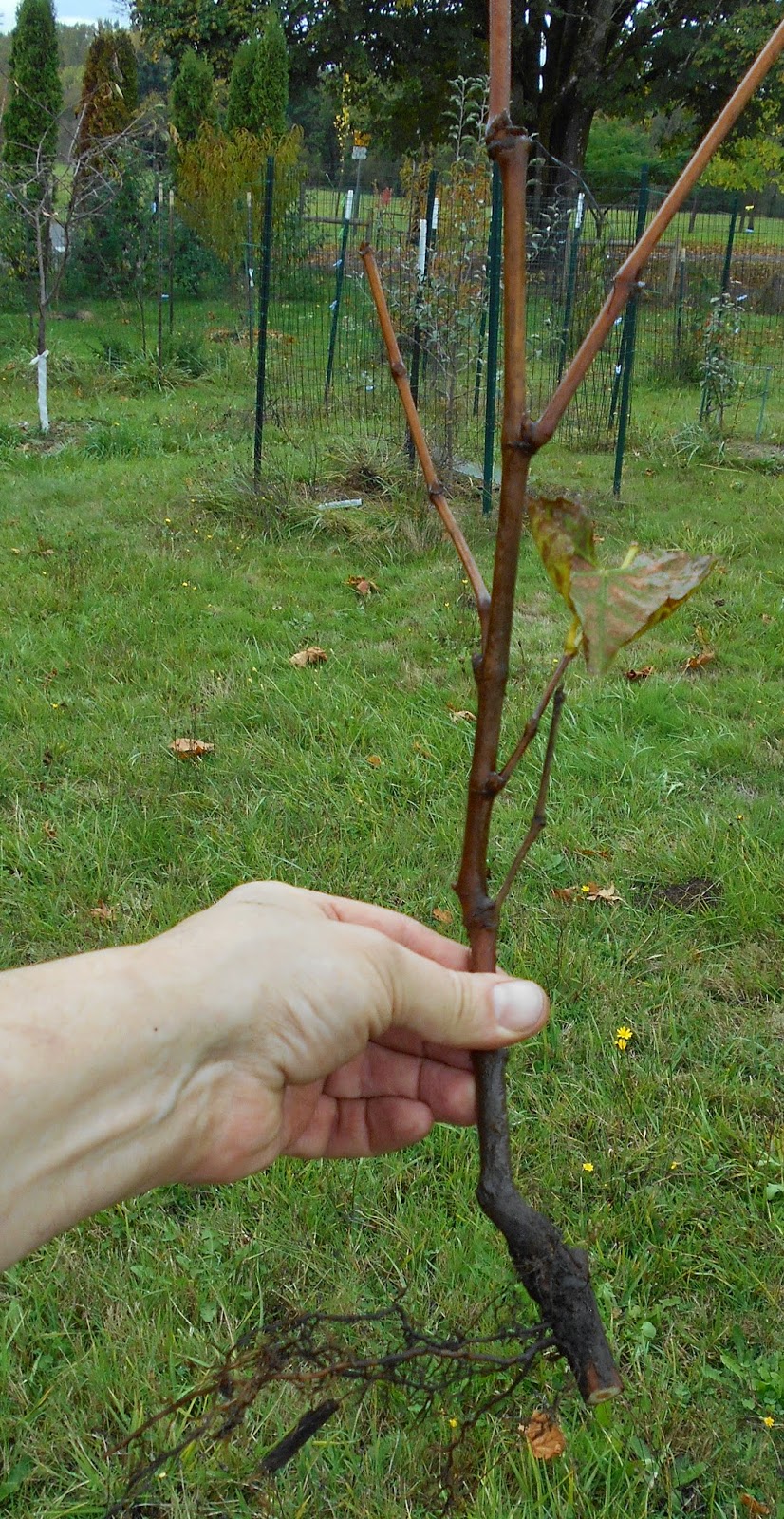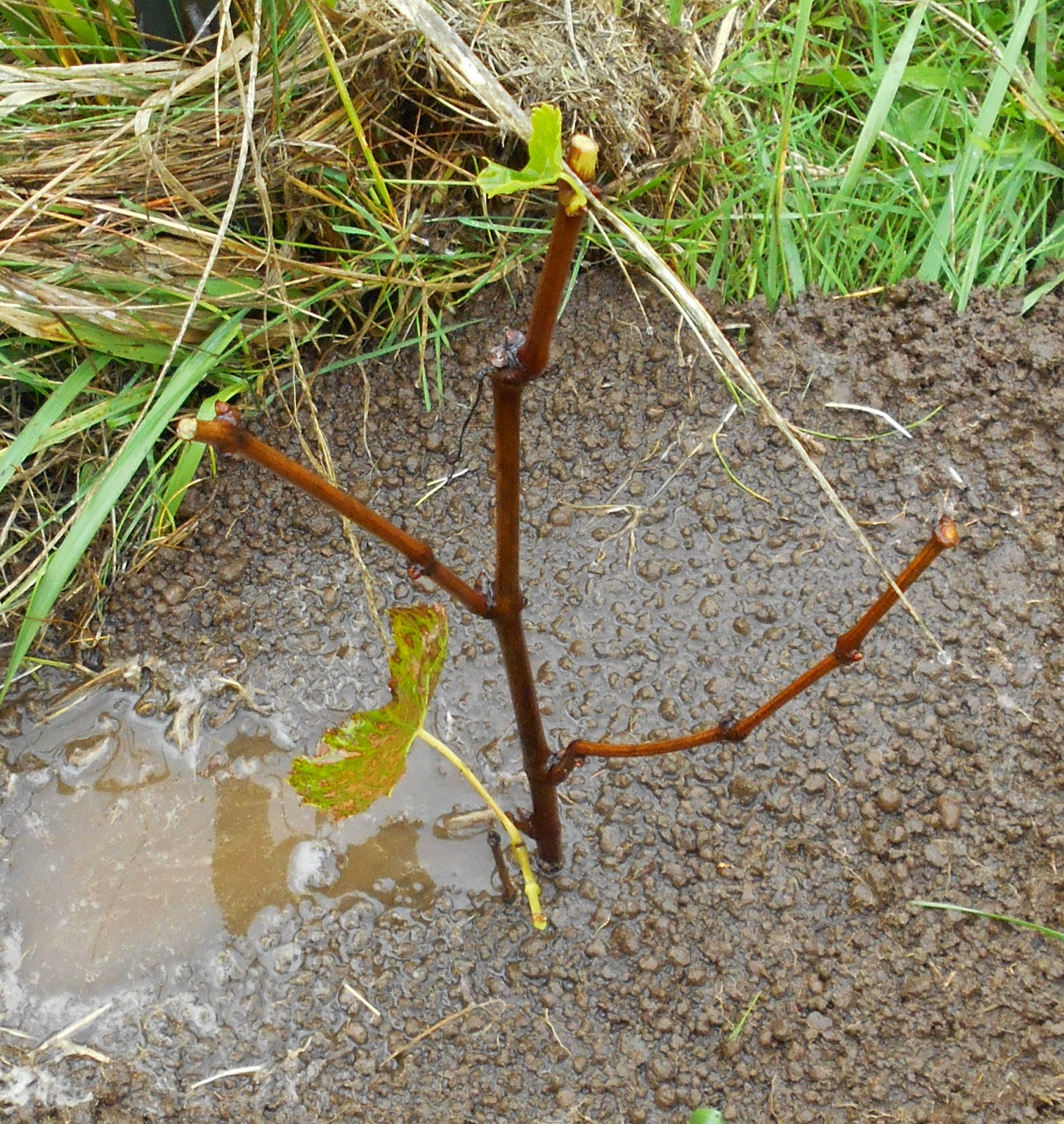 |
| North Side of Orchard. 11.8.14 |
 |
| Wild Plum Seedling. 2 years old. 11.7.14 |
 |
| Buddleia Windbreak West of Orchard. 11.8.14 |
 |
| Fig Row, South of House. 11.8.14 |
Some views of mini orchard spread around the yard. This is end of the 3rd summer here at Battleground, so many of the trees have had 2 full years to acclimate and grow.
Pawpaws were planted the first summer. Never having grown them, and read about difficult to get started and slow to grow, I'm pleased they have done this well. The smallest is
Rebecca's Gold, about one foot tall.
NC-1 is the largest, about 4 foot tall.
Sunflower, about 3 foot tall. I'm also pleased about the
persimmons.
Nikita's Gift was so tiny I wondered if it would grow. Now, sturdy and looking promising for future years, although only about 4 foot tall.
Saijo is about 8 foot. I did give them - and the paw paws, organic nitrogen this Spring.
Peaches -
Oregon Curl Free about 9 foot tall.
Charlotte about 8 foot tall.
Indian Free about 3 foot tall.
Q-1-8 in it's first year, grew rapidly, 5 foot tall. The only one of the 3 older trees to have bad leaf curl was
Charlotte. That was also the only one to have peaches - only 2 - this is only the 2nd year old for these.
Wild Plums, the largest seedling is about 8 foot tall. This is 3rd year from seed, the first being in container. There are 3, only one in a prime location for sun and with protection. Deer eat up to about 4 feet, but the top looks very good.
Other plums,
Stanley didn't bear but is very large now, mature looking tree. Has spurs with promise for flowers.
Satsuma died. Replaced with cutting-grown
Hollywood, 1 foot tall 1st year from cutting.
Toka was best tasting, 3 plums. 7 foot tall.
Methley, no plums, growth now 5 foot tall. NOIDs already on property, the smallest / deer mangled fully recovered and above the usual deer browsing height; the largest had only about 4 plums. Now both with multiple bud grafts of other varieties.
Cherries, lots of deer browsing. Very discouraging. The sweet cherries and tart cherries need better protection. Sweet cherries did establish well, now about 5 foot tall. Central leads are good, branches browsed to within the narrow cages I installed on these.
Montmorency did very well when I got the deer fence in, 8 foot tall and lush. I can buy more fencing if I use the truck to commute this week.
North Star and
Almaden Duke unprotected browsed nearly to death, we'll see what happens next year. Both have some bud grafts that are looking tenuous, we'll see.
Apples, this is first year for most. Wondering if minidwarfs are a good idea. The dwarfs -
JonaRed - shipped from
Starks, excellent growth, and multi-graft disease resistant,
Rubinette,
Pristine, and
Queen Cox, shipped from Raintree, almost as good. The columnar apples, planted at about 18 inches tall their first year, now about 3 foot tall,
Golden Sentinel had one apple - very good,
Scarlet Sentinel had none. They are in cages.
 |
| Illinois Everbearing Mulberry and NOID Forsythia. 11.8.14 |
Figs, South of house, recovered from frost kill.
Sal's was not frost killed, now 4 foot.
Tiger,
Carini,
Smith all grew multi-trunks to 2 or 3 foot.
Petite Aubique, 18 inches, but sturdy. I'm in process of installing gnaw-screens as leaves fall. When colder, plan to add inverted trash can protectors for the young ones, and chicken wire or bird net to deter deer and rabbits, for Sal's. Plan next year- replace the NOID with
Lattarula from container, in Spring. Maybe add one more to row,
Dominick. If any die back again maybe replace with
Dominic instead of adding one more.
Buddleia hedge grew to 8 foot tall, for those in 2nd year - Blueberry and Peach Cobbler varieties. They weren't all that attractive, but the windbreak will be useful. That side is source of wind. Honeycomb, in 2st year, grew about the same as the others did last year. Anticipate pruning all back, so they can grow bushier and not over-tall.
Illinois Everbearing Mulberry, not in the 5 X 5 grid but nearby. Now 8 foot tall. Had some nice mulberries this year. No dear browsing. Most branches probably too tall. It may be hard to install bird netting next year due to height, but I should try.








































